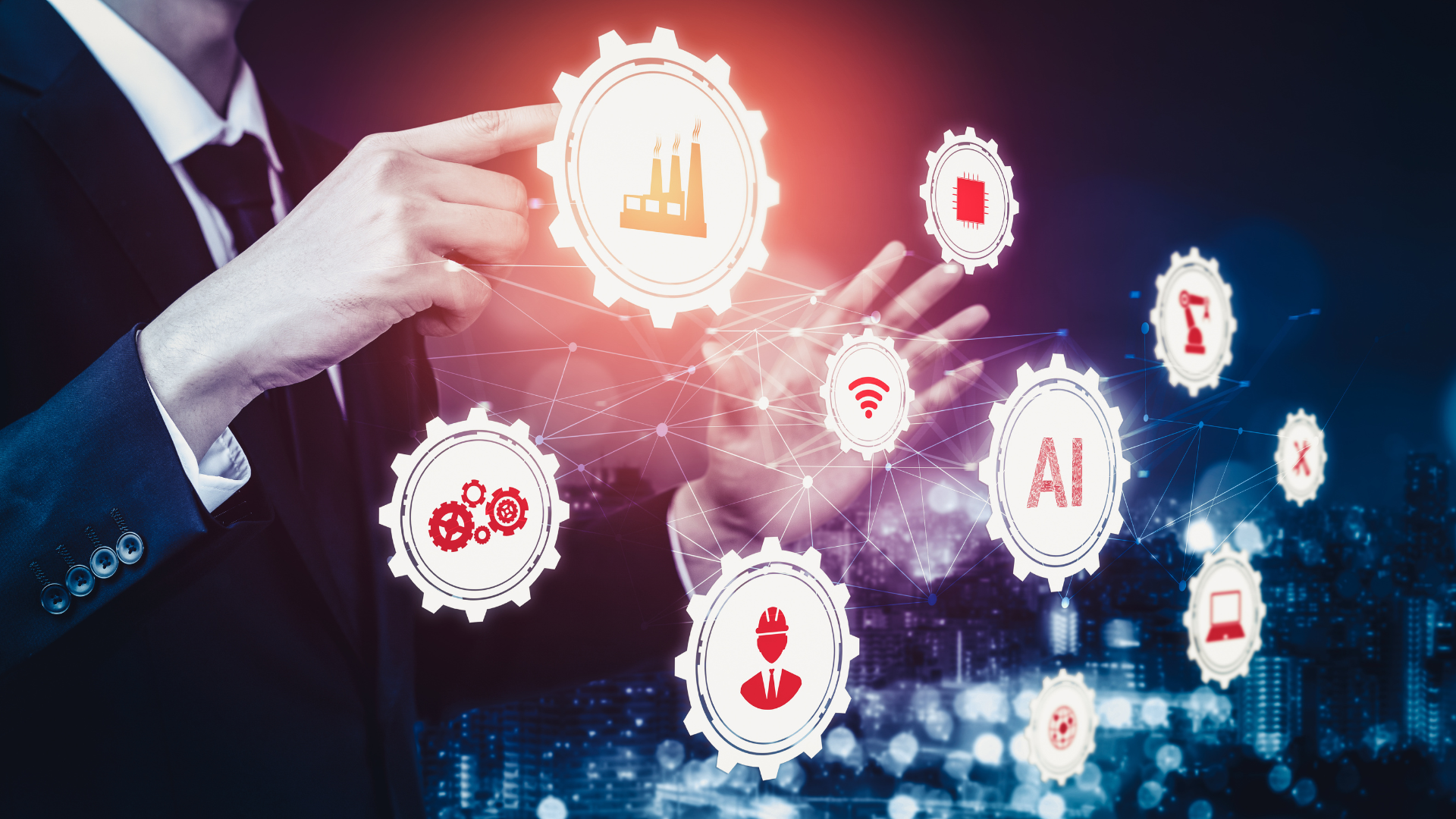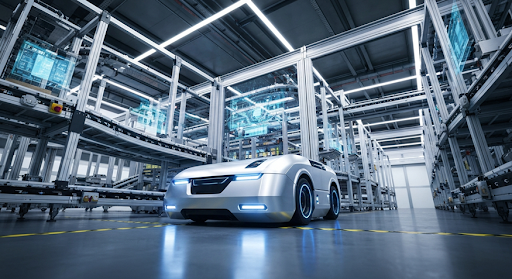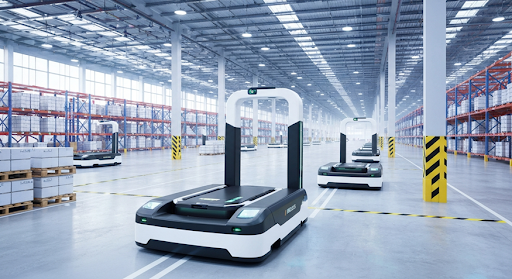Industry 4.0 and the Fourth Industrial Revolution
Industry 4. 0, also known as the fourth industrial revolution, signifies a significant shift in various industries with the integration of advanced technologies. This revolutionary concept encompasses the convergence of digital, physical, and biological systems, resulting in a transformative impact on traditional manufacturing and supply chain processes. The adoption of Industry 4. 0 technologies allows industries to leverage automation, data exchange, artificial intelligence, and the Internet of Things (IoT) to optimize efficiency, enhance productivity, and drive innovation across their operations. The integration of these cutting-edge technologies enables seamless communication between machines and humans while facilitating real-time decision-making based on data-driven insights. With Industry 4. 0 paving the way for smart factories and intelligent supply chains, businesses can unlock new opportunities for growth and competitiveness in an increasingly connected and digital world.
What does Industry 4.0 Mean in Supply Chain?
In the ever-evolving field of supply chain management, the concept of Industry 4. 0 has gained significant attention. It revolves around leveraging cutting-edge technologies such as the Internet of Things (IoT), artificial intelligence (AI), robotics, and big data analytics to revolutionize and optimize operational processes. By harnessing these advanced technologies, businesses can now achieve real-time monitoring and control over production processes, enabling them to make data-driven decisions promptly. Additionally, predictive maintenance capabilities can be employed to ensure continuous operation of critical assets while minimizing costly downtime. Furthermore, efficient inventory management becomes a reality through the integration of AI-powered algorithms that accurately forecast demand and streamline stock levels across the entire supply chain network. Lastly, Industry 4. 0 empowers organizations with enhanced visibility into every stage of the supply chain, allowing them to identify potential bottlenecks or inefficiencies quickly and implement proactive measures for improvement.
What are the 4 Types of Industry?
Industry classification is a crucial aspect of understanding the different sectors that contribute to an economy. There are four distinct types or stages of industry classification that categorize various economic activities. The first type is the primary industry, which encompasses extractive activities such as mining, agriculture, and forestry. These industries are responsible for obtaining raw materials directly from nature. The second type is the secondary industry, which revolves around manufacturing processes. This sector involves transforming raw materials obtained from primary industries into finished products that can be consumed or used in other industries. The third type is the tertiary industry, also known as the service industry. This sector primarily focuses on providing services to businesses and individuals. It includes a wide range of sectors such as healthcare, finance, education, tourism, and transportation. Lastly, we have the quaternary industry, which represents knowledge-based activities. This sector involves intellectual endeavors such as research and development, technology consulting, information technology services, and other knowledge-intensive fields. With the advent of Industry 4. 0, there has been a significant emphasis on transforming manufacturing processes through automation and digitization. Industry 4. 0 seeks to integrate advanced technologies like artificial intelligence (AI), internet of things (IoT), big data analytics, robotics automation systems (RAS), and cloud computing into manufacturing operations to achieve higher efficiency levels and improved productivity. By embracing these technological advancements in manufacturing processes under Industry 4. 0 principles , companies can optimize their production lines by leveraging real-time data analysis to make informed decisions swiftly . The goal is to create smart factories that are interconnected with intelligent machines capable of self-optimizing operations while reducing human intervention. Overall, Industry 4. 0 represents a paradigm shift in manufacturing practices by harnessing cutting-edge technologies with an aim towards increased productivity , cost-effectiveness , sustainability , and reduced lead times - ultimately transforming traditional factories into highly efficient ecosystems powered by automation and digitization .
Industry 4.0 Benefits
What is an example of the industry 4.0 Revolution?
An example that showcases the revolution brought about by Industry 4.0 is smart factories where machines are interconnected with sensors that collect real-time data for analysis. This allows for autonomous decision-making based on insights derived from data analytics.
What is Industry 4.0 PDF?
While I couldn't find a specific PDF titled "What is Industry 4.0," there are numerous resources available online that provide detailed information on this topic in PDF format. As for "Industry 5.0," it refers to a potential future evolution beyond Industry 4.0 that emphasizes human-machine collaboration rather than complete automation but is not yet widely defined or implemented in practice.
What is the 1st 2nd 3rd and 4th industrial revolution?
Industry 4.0, also known as the Fourth Industrial Revolution, refers to the integration of advanced technologies into various industries to create a more connected and automated manufacturing environment. In simple terms, it is the concept of using digital technologies to optimize and enhance industrial processes.
What is Industry 5.0 pdf?
While there is no specific mention of an "industry 5.0 PDF," it is worth noting that Industry 5.0 is a concept that focuses on human-machine collaboration rather than complete automation.
How does Industry 4.0 affect people?
The impact of Industry 4.0 on individuals varies depending on their roles within the industry. While some jobs may be automated or transformed by technology, new opportunities arise in areas such as data analysis, cybersecurity, and programming.
How does Industry 4.0 affect society?
From a societal perspective, Industry 4.0 brings both benefits and challenges. On one hand, it can lead to increased productivity, improved product quality, reduced costs, and enhanced sustainability efforts. On the other hand, concerns arise regarding job displacement due to automation and the need for upskilling or reskilling the workforce to adapt to changing demands.
Overall, Industry 4.0 represents a transformative shift in manufacturing processes by leveraging advanced technologies for increased efficiency and competitiveness in today's digital age.
Industry 4.0 in Manufacturing
Industry 4.0, also known as the fourth industrial revolution, refers to the integration of advanced technologies into manufacturing processes to create a more connected and automated system. This revolutionary concept brings together technologies such as artificial intelligence, internet of things (IoT), big data analytics, cloud computing, and robotics to transform traditional manufacturing practices.
Industry 4.0 Technologies Examples
The implementation of Industry 4.0 technologies also leads to improved product quality through better monitoring and control systems. Manufacturers can achieve higher levels of customization by quickly adapting their production lines to meet individual customer demands.
In terms of economic impact, Industry 4.0 has the potential to drive significant growth by creating new business models and revenue streams. It fosters innovation through collaboration between humans and machines while empowering workers with new skill sets required in this digital era.
There are numerous resources available in PDF format that provide detailed insights into Industry 4.0 technologies, its benefits in manufacturing, case studies/examples showcasing successful implementations across various industries as well as reports that analyze its impact on global economies.
Industry 5.0 meaning
It is worth noting that there is no specific industry referred to as "Industry 5.0" at present; however, some discussions revolve around a future phase where humans work alongside intelligent systems collaboratively for enhanced productivity - often referred to as "human-robot collaboration."
The Industry 4.0 revolution has brought significant advancements in technology and automation to various sectors. However, the evolution does not stop there. The concept of Industry 5.0 is gaining attention as the next phase of industrial development.
Industry 5.0 refers to the integration of human workers with advanced technologies like artificial intelligence, robotics, and automation systems. It aims to create a harmonious collaboration between humans and machines, leveraging the unique capabilities of both.
While Industry 4.0 focused on optimizing processes through digitalization and connectivity, Industry 5.0 takes it a step further by emphasizing the importance of human skills alongside technological advancements.
What are the 6 main applications of Industry 4.0 today?
The six main applications of Industry 4.0 today encompass various areas:
1) Smart factories: Utilizing IoT devices, sensors, and data analytics for real-time monitoring and optimization of production processes.
2) Predictive maintenance: Using machine learning algorithms to anticipate equipment failures or maintenance needs, reducing downtime.
3) Supply chain optimization: Applying data analytics to optimize inventory management, logistics planning, and demand forecasting.
4) Digital twins: Creating virtual replicas of physical assets or systems for simulation, testing, and performance analysis.
5) Additive manufacturing (3D printing): Enabling rapid prototyping, customization options, reduced waste material usage.
6) Augmented reality (AR): Enhancing worker training programs through interactive and immersive experiences, improving efficiency and safety.
What is Industry 5.0 McKinsey?
McKinsey & Company, a global management consulting firm, has also explored the concept of Industry 5.0. They highlight the need for organizations to embrace human-machine collaboration to unlock new opportunities and achieve sustainable growth in the future.






